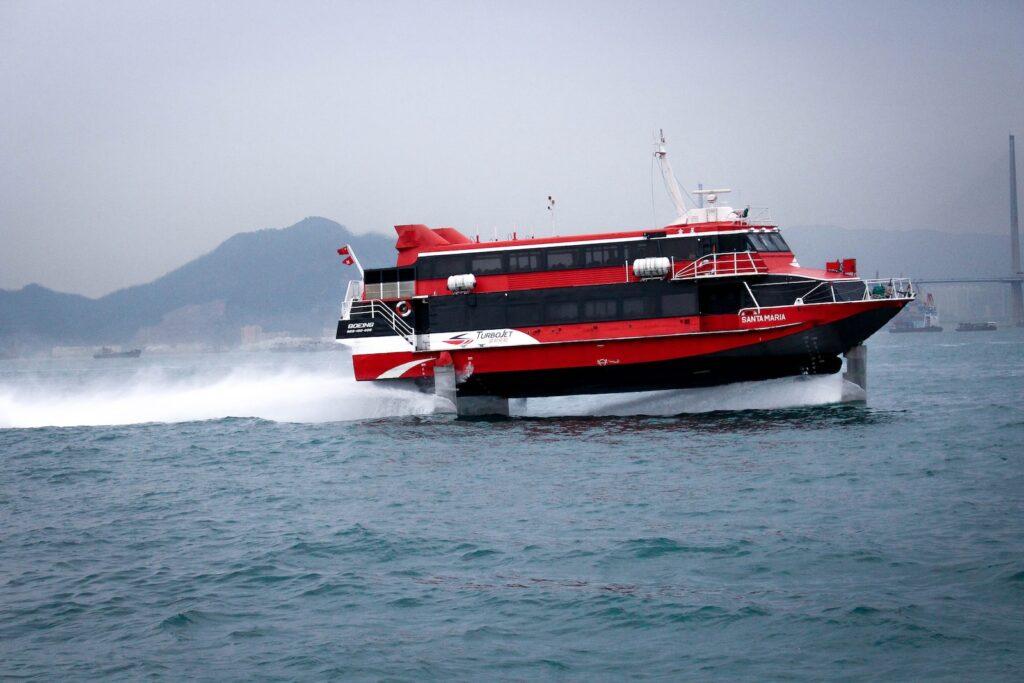Hydrofoil Boats — What You Need to Know
Hydrofoil boats, equipped with unique lifting surfaces, elevate above the water at high speeds, reducing drag and enhancing speed and fuel efficiency.
Types of Hydrofoils Boats
Hydrofoil boats, a marvel of marine engineering, represent a unique and innovative class of watercraft. These vessels stand out due to their ability to elevate above the water’s surface, reducing drag and allowing for higher speeds and improved fuel efficiency. In this introduction, we will explore the various types of hydrofoil boats, each designed with specific purposes and features in mind. From leisurely cruising models to high-speed racing designs, hydrofoils demonstrate a remarkable blend of technology and performance.
Historical Development of Hydrofoils
- Early Concepts: The idea dates back to a British patent in 1869.
- Notable Contributors: Enrico Forlanini and Alexander Graham Bell were pivotal in early hydrofoil development.
- First Commercial Hydrofoil: The PT10 “Freccia d’Oro,” launched in 1952, was the first of its kind for commercial use.
Hydrofoils in Military Use
| Country | Purpose | Description |
|---|---|---|
| Germany | Mine-laying | Used in WWII |
| Canada | Anti-submarine | Tested various designs including HMCS Bras d’Or |
| Soviet Union & USA | Fast attack & combat | Incorporated into naval fleets |
Modern Applications of Hydrofoils
| Application | Description |
|---|---|
| Passenger Ferries | High-speed transport globally |
| Recreational Use | Popular in sailing, kitesurfing, windsurfing |
| Innovative Designs | Hydrofoil e‑bikes, electric watercraft |
Key Takeaways
- Hydrofoil boats use hydrofoils to lift the boat out of the water, allowing them to glide effortlessly above the surface.
- Hydrofoil boats offer advantages such as unmatched speeds, improved fuel efficiency, and a smooth ride even in rough waves.
- Factors to consider before buying a hydrofoil boat include cost, maintenance requirements, and weighing the exhilaration of gliding above the water against the associated costs.
- Maintenance tips for hydrofoil boats include regular inspections, cleaning, lubrication, and monitoring of the hydraulic system (if applicable).
How Hydrofoil Boats Work
You’ll be amazed by how hydrofoil boats work and their ability to glide above the water. These incredible vessels use a unique technology that allows them to defy gravity and move swiftly through the waves. The secret lies in the hydrofoils, which are wing-like structures located underneath the hull of the boat. As the boat gains speed, water pressure builds up beneath the hydrofoils, causing lift. This lift, combined with the forward propulsion, allows the boat to rise above the water surface and glide effortlessly.
The freedom that hydrofoil boats offer is unparalleled. Imagine the thrill of soaring above the water, leaving behind the constraints of traditional boats. With their ability to reach higher speeds and smoother rides, hydrofoil boats provide an exhilarating experience for those who crave the feeling of liberation and adventure.
Hydrofoil boats are highly maneuverable, giving you the freedom to navigate through shallow waters and tight spaces. Their efficient design reduces drag, allowing for increased speed and fuel efficiency. Whether you want to explore hidden coves, engage in watersports, or simply enjoy a leisurely ride, hydrofoil boats offer the freedom to go wherever your heart desires.

Advantages of Hydrofoil Boats
Sometimes, hydrofoil boats can be more expensive than traditional boats, but they offer numerous advantages such as increased speed and fuel efficiency. If you’re someone who craves freedom on the water, hydrofoil boats might just be your ticket to an exhilarating experience.
Here are some reasons why hydrofoil boats are worth considering:
- Unmatched Speed: Hydrofoil boats are designed to rise above the water on wings called foils, reducing drag and allowing them to reach incredible speeds. Imagine gliding effortlessly across the water, leaving other boats in your wake.
- Improved Fuel Efficiency: With their ability to glide above the water’s surface, hydrofoil boats require less power to move forward. This translates to greater fuel efficiency, saving you money in the long run and reducing your carbon footprint.
- Smooth and Stable Ride: The wings on hydrofoil boats provide stability and minimize the impact of rough waves. Say goodbye to jolting movements and hello to a smooth ride that keeps you comfortable and in control.
- Expanded Range: Hydrofoil boats can traverse both shallow and deep waters with ease, opening up a whole new world of exploration. From tranquil lakes to open oceans, the freedom to explore diverse water bodies is at your fingertips.
Factors to Consider Before Buying a Hydrofoil Boat
Before making a decision, take into account the cost and maintenance requirements of a hydrofoil boat. These sleek and futuristic vessels may seem like the ultimate freedom machines, but there are important factors to consider before diving in.
Let’s talk about the cost. Hydrofoil boats aren’t cheap. The technology and engineering involved in creating these high-speed wonders come at a premium price. So, if you’re on a tight budget, you might need to reconsider.
Maintenance can be a significant commitment. These boats require regular inspections, cleaning, and upkeep to ensure optimal performance. The hydrofoils themselves need to be carefully maintained to prevent damage and ensure a smooth ride. So, if you’re looking for a low-maintenance option, a hydrofoil boat mightn’t be the best fit.
It’s important to weigh the exhilaration and freedom of gliding above the water against the cost and maintenance requirements. Only you can decide if the benefits outweigh the investment. So, take your time, do your research, and make a decision that aligns with your desire for freedom and adventure.
Maintenance Tips for Hydrofoil Boats
To keep your hydrofoil boat in top condition, regularly inspect the foils for any signs of damage or wear. The foils are an essential component of your boat, responsible for lifting the vessel out of the water and providing a smooth, fast ride. Follow these maintenance tips to ensure your hydrofoil boat remains in peak performance:
- Check for cracks or dents: Inspect the foils carefully, paying close attention to any cracks or dents that may compromise their integrity. Repair or replace damaged foils promptly to avoid further issues.
- Clean and lubricate: Keep the foils clean and free from debris, as any buildup can affect their performance. Regularly clean them with a mild detergent and water, and apply a suitable lubricant to keep them moving smoothly.
- Monitor the fasteners: Check the bolts and screws that secure the foils to the boat. Make sure they’re tightened properly and replace any that show signs of corrosion or wear.
- Inspect the hydraulic system: If your hydrofoil boat is equipped with a hydraulic system, check it regularly for leaks or malfunctioning parts. Address any issues promptly to maintain optimal functionality.

Popular Hydrofoil Boat Models
You should consider researching the popular hydrofoil boat models on the market, as they offer an exciting and efficient way to navigate the water. These boats are designed to lift above the surface of the water, reducing drag and increasing speed. Here are some popular hydrofoil boat models that you should take a closer look at:
| Boat Model | Speed (mph) | Capacity | Price Range ($) |
|---|---|---|---|
| HydroSpeed | 60 | 4 | $50,000 — $80,000 |
| AquaRider | 55 | 6 | $40,000 — $70,000 |
| WaveMaster | 70 | 2 | $60,000 — $90,000 |
| SpeedSurfer | 65 | 3 | $55,000 — $85,000 |
The HydroSpeed is known for its impressive speed and can accommodate up to 4 people, making it perfect for small groups. The AquaRider offers a balance between speed and capacity, making it ideal for family outings. On the other hand, the WaveMaster is a high-speed hydrofoil boat designed for thrill-seekers who prefer to ride solo. Lastly, the SpeedSurfer offers a combination of speed and comfort, making it suitable for couples or small groups.
With these popular hydrofoil boat models, you can experience the exhilaration of gliding above the water while enjoying the freedom and efficiency they offer. So, go ahead and research these models to find the perfect hydrofoil boat that suits your needs and desires.
Conclusion
Hydrofoil boats, with their advanced technology, offer a glimpse into the future of marine transportation. Despite challenges like cavitation and high costs, their diverse applications from military to leisure activities demonstrate their potential and versatility.
